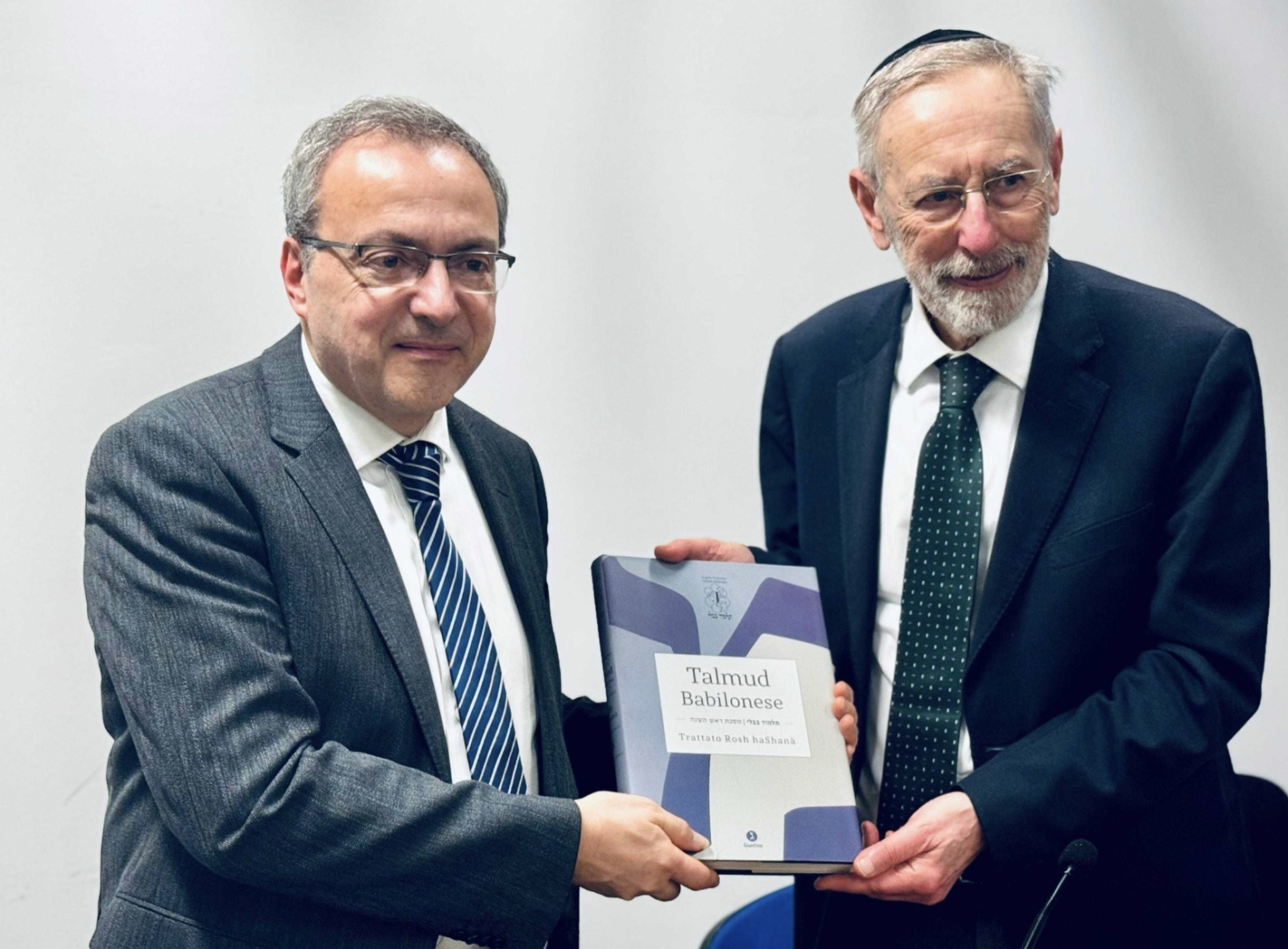ROME – The Talmud enters the Italian National Library

In 2016, Rosh Hashanah became the first Talmudic treatise to be translated into Italian, following the path defined by the memorandum of understanding signed five years earlier by the Government, the National Research Council, and the Union of Italian Jewish Communities/Italian Rabbinical College. The treatise is now an integral part of the Italian National Library and its catalogue of over eight million books.
“Approximately 120 of these are connected to the Talmud,” explained Stefano Campagnolo, the director of the National Central Library of Rome, after a copy was donated. “The earliest editions date to the 16th century and are hostile and influenced by Jesuitism.” However, from the same period, “we also conserve excellent Jewish works.”
For Campagnolo, welcoming the Talmud to the National Library is part of “a long relation with the Jewish world. Right this year, at a conference in November, we will celebrate the conclusion of the Y-ITALYA Books project, which was dedicated to cataloguing Jewish books, together with the UCEI.”
The Chief Rabbi of Rome, Riccardo Di Segni, highlighted the value of the Talmud translation project. “Since the protocol was signed, all the Italian governments that have followed have supported us. Everyone believed in the significance of this commitment.”
The light and the dark
“In Italy, the history of the Talmud and its dissemination is marked by moments of light and darkness,” the rabbi recalled. “Light: The man who oversaw its printing in Venice was an exceptional figure. He was the Christian typographer and art merchant Daniel Bomberg, who was surrounded by expert rabbis.” “Darkness: In 1553, the Talmud was burned in Campo de’ Fiori, a square in the heart of Rome where, in 1600, the Church would burn Giordano Bruno at the stake.” “As the saying goes, ‘First books, then people,'” said Rabbi Di Segni. To remember what happened, a plaque was installed in Campo de’ Fiori a few years ago. Rabbi Gianfranco Di Segni, the coordinator of the Italian translation, explained that the Talmud can be understood as “a great repository. In its pages, we can find laws, religious rituals, anecdotes about the Masters, interpretations of the Bible, and questions about mysticism.”
Translated by Chiara Tona and revised by Rebecca Luna Escobar, students at the Advanced School for Interpreters and Translators of the University of Trieste, trainees in the newsroom of the Union of the Italian Jewish Communities — Pagine Ebraiche.
(Photo: Stefano Campagnolo and rav Riccardo Di Segni present the Italian translation of the Talmud treatise)
